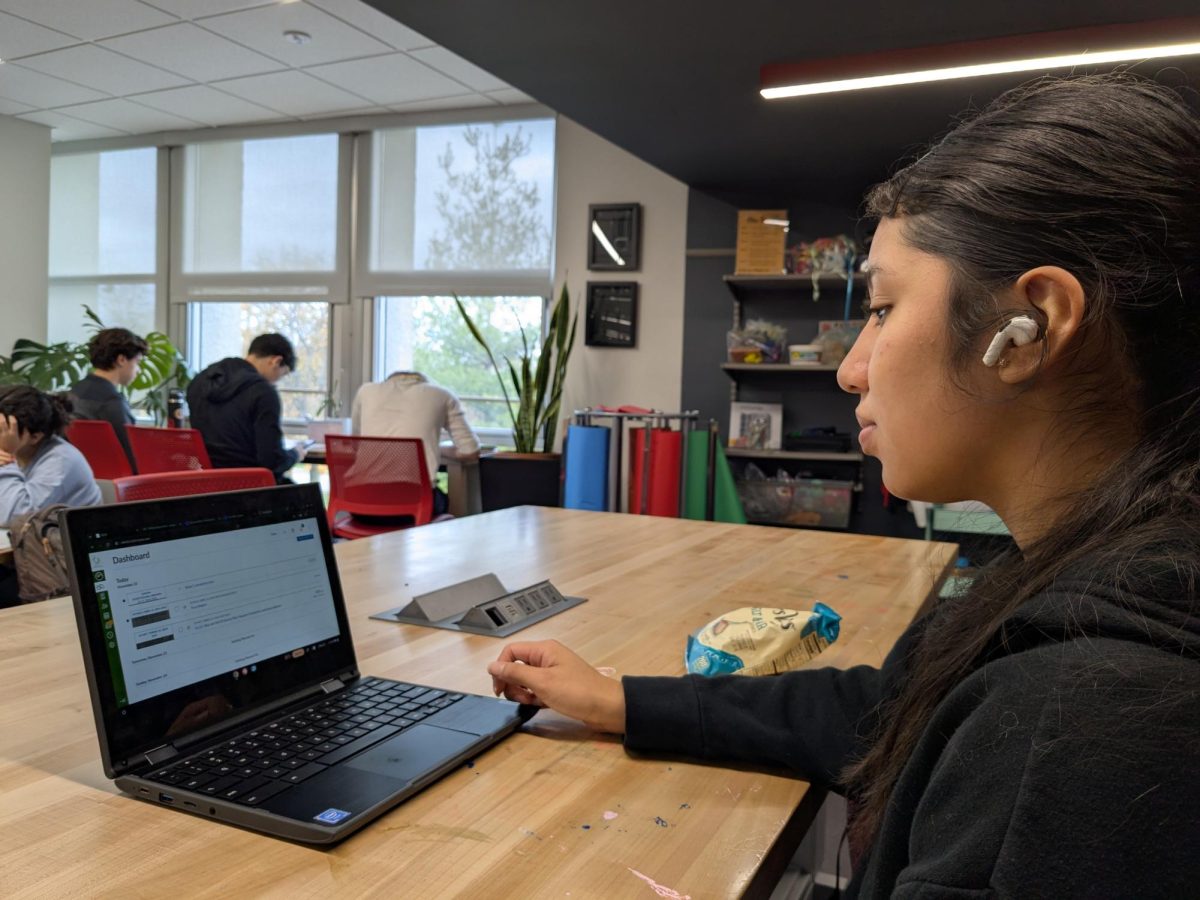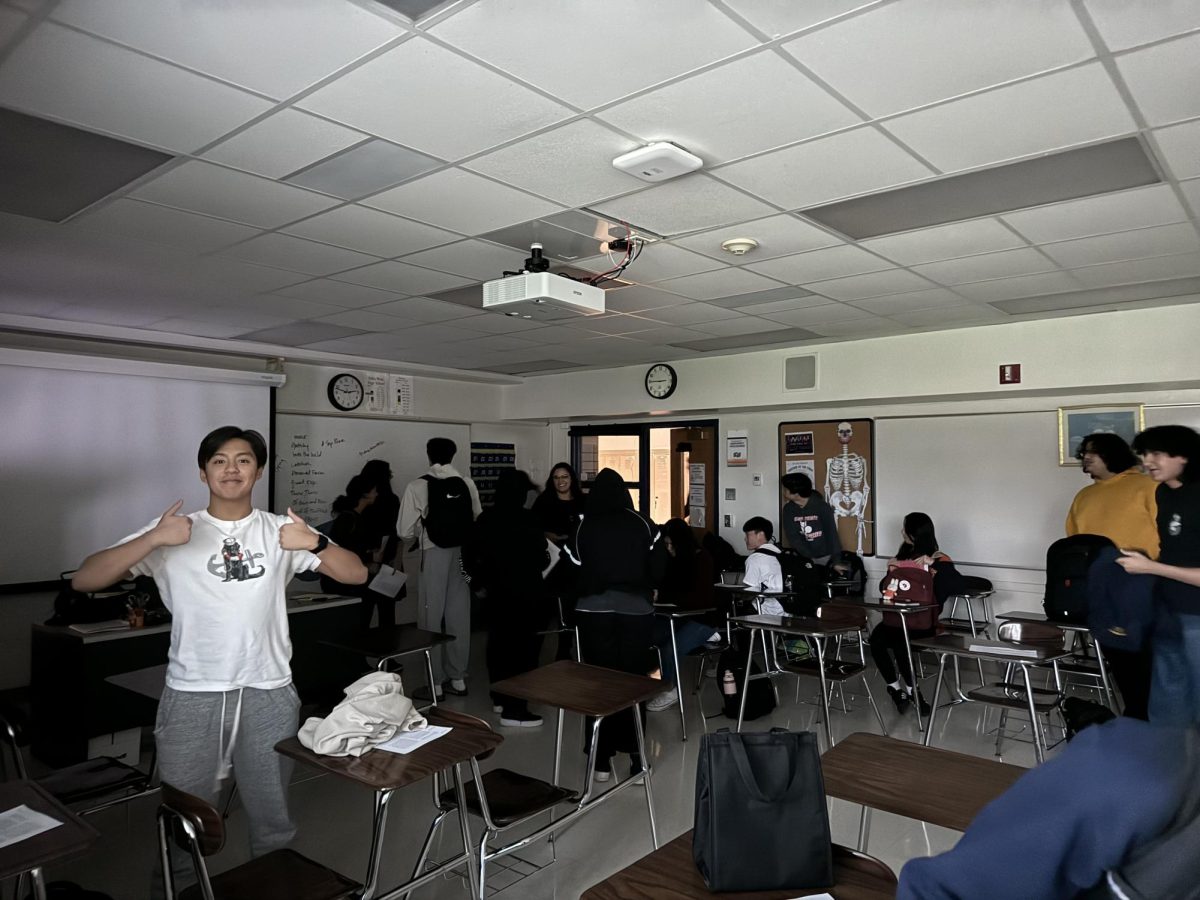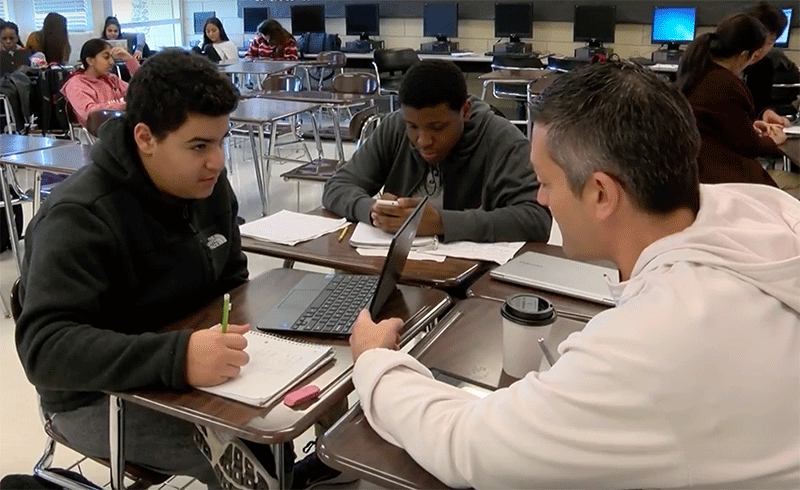After receiving complaints and concerns about the quality and quantity of the cafeteria food, Organic Life representatives had a meeting Wednesday, Feb. 6 with the student government and district administrators and admitted there might be an inconsistency with the servings.
During the meeting, Organic Life executives brought in a scale and a measuring cup that was similar to the devices used to measure cafeteria food portions throughout the country. They also brought in a sample green plate to show the correct portions.
“We’re serving thousands and thousands of meals every day, so we expect that there will be inconsistencies. District managers work with their staff every day to make sure that they are getting closer to having the exact portions,” CEO of Organic Life Jonas Falk said.
Falk confirmed the company has been following the criteria of the USDA guidelines and that they haven’t intentionally decreased the quality and quantity of their service. He said it is a matter of perception.
“Perception is reality. We didn’t direct anybody to do that, [change the portions],” Falk said.
LOW-COST MEALS
According to the Organic Life executives, the green plate at Niles West is the lowest-costing meal at all the schools they serve ($2.75, which is a 50-cent increase from last year). High schools near Waukegan and similar areas have green plates that cost $3-5, Falk said. Niles West students also get fresh fruits and vegetables while the other schools pay higher prices and get canned food.
“The same panini sandwhich that we sell is in the cafeteria is in our restaurants for $3.95 while it’s sold at our restaurants for $7,” Organic Life vice president Joe Kreeger said.
The district and the Organic Life executives agreed the change in quantity was made in the beginning of the school year, when the USDA made new guidelines.
“If there’s a change in quantity it’s because we have a different contract,” chief financial officer Khris Rull said.
Aside from making sure the consistency in the food is improved, there wasn’t much that they could change with the portions.
“There’s not really anything to change in the contract even if we wanted to. We have to abide these rules. We can increase portions, but we still have to wait for the USDA to make their move and say, ”this is what the new portion requirements are going to be in the United States,'” Falk said.
The district and Organic Life have plans to ensure there is a consistency with the service of the cafeteria food.
“We check on it daily, we have someone check on outside of organic life to make sure all these guidelines are met,” food service director Erica Arlinsky said.
STUDENTS REACT
Despite what Organic Life said, students are still firm in their claims in the months leading up to #lunchstrike2013 that the quantity and the quality of the food served in the cafeteria decreased.
In the beginning of the year they would give more [food]. it was warmer.It seemed like they stopped trying. After two months into the school year, t hey had a lack of effort. I guess they’re trying to make it good now that there was a strike,” sophomore Manal Razzak said.
According to Falk, the number of meals that students purchased decreased minimally last week, with about 100 less meals bought.
Since the beginning of this week, more students have been buying food in the cafeteria and students report that the portion sizes have improved.
“A kid at my lunch table today was saying ‘you used to get half of it, now it’s more,'” sophomore Delanie Kwiecinski said.
INCONSISTENCIES POSSIBLE
Organic Life executives said they are aware there was an inconsistency with the quality of the pasta sauce and the amount of pasta that is given to the students. They have plans on looking in to it. They also plan on communicating better with the students by having more signage in the cafeteria.
“If it’s one specific thing, like the pasta area, there was only one person working in that area and they might have made the mistake of giving more,” Kreeger said.
Last week, students also reported two cafeteria workers were let go for giving students extra portions. Organic Life has not confirmed these claims; however, Falk said it’s possible some servers gave extra portions at times.
“The people who work in the cafeteria do it to work with kids, not to get rich. If they see kids are upset, then they might give extra scoops. They’re still suppose to be following those guidelines,” Falk said.
STUDENT GOVERNMENT RESPONDS
During the meeting, the idea of an athlete meal was also introduced to the company.
“It would be have more protein and more carbs for under $3.50,” student government vice president and junior Stephanie Knorr said.
A question box will be put in the cafeteria so students can communicate with the company.
School board representative and senior Lyba Zia said she is confident Organic Life will tend to the complaints.
“I definitely wish the meeting was longer because I felt we only began to discuss the student concerns in depth; however, for the time we had, we were able to get many questions answered. I do think that Organic Life will make a greater effort to better communicate with students and this will allow us (the students) to bring our concerns directly to them. This will give us the chance to question them when, for instance, we believe that portions are no longer constant or the meals are not meeting the set nutritional value,” Zia said.
















John • Feb 12, 2013 at 9:39 AM
The pasta area is the only one that seems to have experienced any changes since the beginning of the school year. The salad bar hasn’t changed, the pizza area hasn’t been any less consistent than last year, etc. A lot of kids are claiming the portions have changed in the last two months but I maintain that simply is not true for at least half of the lunch stations – almost all of the recent menu changes were in August. This entire issue is being blown out of proportion because students like to complain about cafeteria food to begin with, and a small issue at one station has been blown up into a problem with the entire way lunch system is ran.
While a handful of students are coming up with meaningful ways to explain the problem, most are just repeating “The portions! The prices!” The prices are definitely high, but that’s not something that can be changed – healthy food is expensive to produce and market. Organic Life is most likely doing everything in their power to yield as much produce as cheaply as possible. I predicted as soon as we switched to Organic Life prices would go up, and so far,
I’m not saying students don’t have a right to complain, but they are broadening a narrower, simpler issue. I’m glad Organic Life is trying it’s best to answer these innumerable complaints, and hopefully they can reach some kind of agreement with the students to end this entire issue and put it to rest once and for all.
Rebecca Yun • Feb 14, 2013 at 12:40 AM
If I may, I’d like to interject.
A lot (if not all) of the stations have experienced changes since the beginning of the school year. I’ve had food from all of them from time to time, and each time I buy food the portions change. I understand that the USDA has certain guidelines on how much food a teenager should be eating per day, but I’m sure that they don’t change those guidelines every few days. I mean, seriously, people, before this whole lunch strike started, I got maybe ten macaroni noodles scooped from a miniature ice cream scooper at the pasta line. I bought macaroni a few days ago and, surprise surprise, I actually felt full after eating my FULL plate of food.
I’m also a fan of eating salads because I don’t want to eat too much of one food. In the beginning of the school year, the lunch ladies would serve a generous amount of greens, and a good portion of each desired topping. You also got to dictate how much salad dressing you wanted on your salad. Recently, when I ordered a salad (this was after the strike) I got a tiny pinch of leaves, a cucumber, HALF A CHERRY TOMATO, a small sprinkling of cheese, and three croutons. I was also oh-so-graciously given a small cup of dressing, which ended up being too much for the amount of salad I was given and I wasted about half of it.
I also don’t think it’s very fair that some lunch ladies give more food to students that seem to kiss up to them. I was in line for some orange chicken a few days ago and this person before me was talking to the lunch lady and being cloyingly sweet to her. He got his scoop of chicken and was on his way. When it was my turn to get the food, I got my serving of brown rice and a much-smaller scoop of chicken. Whether or not it happened by coincidence, I don’t think it’s very cool that lunch ladies ‘happen’ to give a little more food to the students they befriend.
But hey, at least soup is still a dollar. Thank goodness for that.
Sherlina Chauhan • Feb 8, 2013 at 5:01 PM
“If it’s one specific thing, like the pasta area, there was only one person working in that area and they might have made the mistake of giving more,” Kreeger said.
They started giving the pasta in small square boxes instead of the regular rectangular ones. At least for me and everyone I know, those sizes are definitely not equal… How do you completely change the container and then only say “there may be inconsistencies”? I was done with pasta at that point, and when the strike came around, I was one of the the many students who brought her lunch. Bringing my lunch as a commitment actually became something I realized I could fit nicely into my schedule. Now I bring it everyday. If things change, there is definitely the chance I will be a regular customer again. But from this article, any address to chance seems pretty vague. Oh well. If they don’t change, I can continue bringing my lunch and so can other students. By the way, loving the red highlighting!